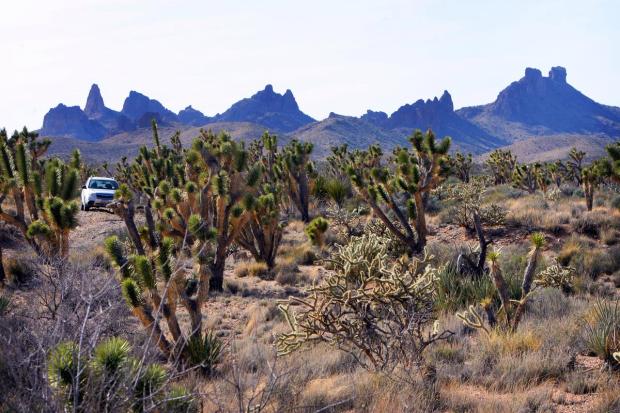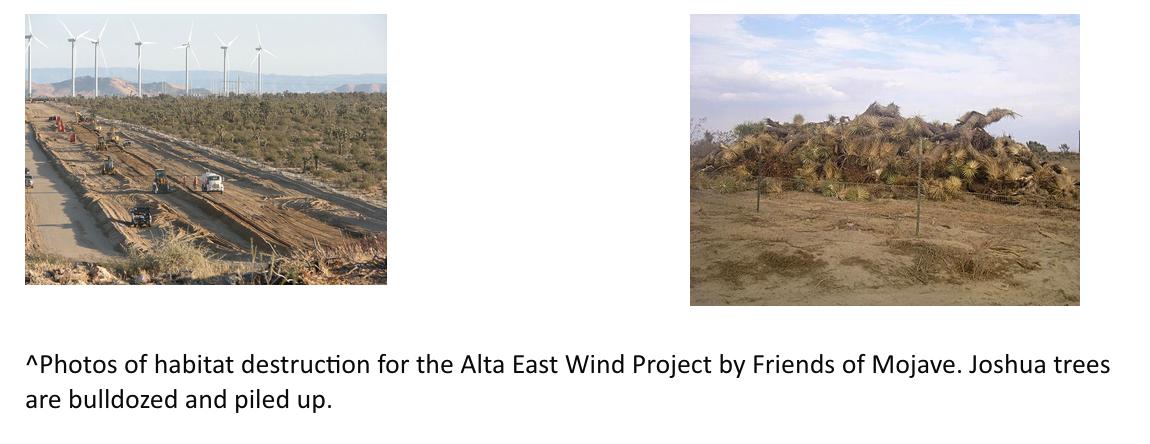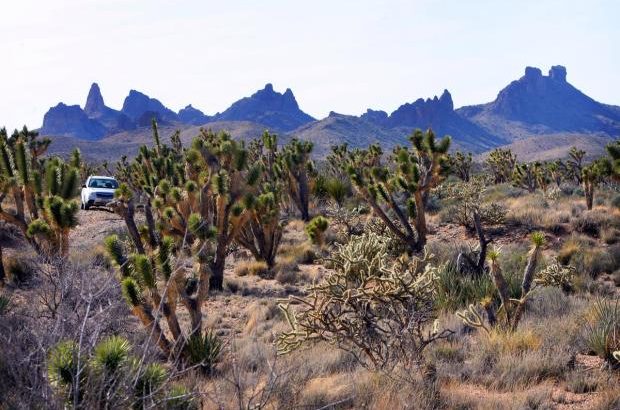
Editors note: Wind energy is destroying the planet just like fossil fuels. So-called “renewable energy” development threatens a massive amount of land globally in the coming years.
We will fight all activities that destroy the land, even when greenwashing propaganda tells us these projects are “sustainable.” We know bullshit when we see it.
Capitalists own and operate the wind and solar industry, which operates globally as a profitmaking enterprise with little or no concern for the natural world and wild beings. Wind power, in this culture, is about maintaining high-energy lifestyles as oil declines, rather than about saving the planet. We are loyal to the natural world, and we are vehemently opposed to this project. We mean to fight it tooth and nail. Please contact us if you would like to be part of organizing against it. This action alert comes via Basin and Range Watch:
—-
The Crescent Peak Wind Project would be located west of Searchlight, Nevada and place up to 248 wind turbines, each about 450 feet tall right on the border of the Castle Mountains National Monument and the Mojave National Preserve.
The Bureau of Land Management (BLM) Las Vegas Field office is seeking public comments on the proposed Crescent Peak Wind Energy Project in Clark County. The project would hug the boundary of the Mojave National Preserve (Castle Peaks in above photo) and the Castle Mountains National Monument.
Eolus North America Inc. (Crescent Peak Renewables LLC) has applied for a Right of Way to construct the Crescent Peak Wind Project. The project would place up to 248 wind turbines on the site. They would be 450 feet tall and have large concrete foundations. The project would create 93 miles of new roads and upgrade 16 miles of existing roads. Roads would need to be over 36 feet wide to accommodate large construction equipment. Close to 20 miles of new transmission would need to be constructed to transmit energy turbines to substations. Transmission would also need to be trenched underground. New lay down areas and construction sites would be cleared. Turbines would need to be illuminated at night time with red flashing lights to comply with FAA regulations.
Unique high desert habitat threatened
The Castle Mountains contain a unique arid grassland community in both California and Nevada. This region in CA-NV contains the only stands of diverse warm-season perennial grasslands west of the Colorado River, subtropical grasslands that are normally found in the Sonoran Desert uplands in Arizona and Mexico. Grass species common in this plant community flower and seed during the warm seasons of summer and fall, especially after strong monsoon rainfall events.
Normally found in the Sonoran Region, and even as far east as the Great Plains, grasses such as Black grama, Blue grama, Sideoats grama, are found in this corner of the Mojave Desert uplands, ranging into a small area of adjacent California. This arid summer monsoon grassland community grades below into diverse creosote scrub and above into Blackbrush scrub and one of the world’s largest Joshua tree woodlands, providing a wide diversity of habitats for reptiles, birds, and mammals.
Avian fauna, Golden Eagles, other Raptors
The Castle Mountains, McCullough Mountains, New York Mountains and Piute Valley to the Searchlight Hills have a unique Sonoran bird fauna that is more typical of Arizona. Gilded flickers, Harris’ Hawks, and a resident population of Curve-billed thrashers, are the only locations of these species in Nevada, and rarely found west of the Colorado River.
The area contains one of the highest densities of golden eagles in the state of Nevada. The Nevada Department of Wildlife located 28 golden eagle nests in the vicinity of the Searchlight Hills and Castle Mountains just before the review of the now cancelled Searchlight Wind Project which would have been right across Piute Valley about 20 miles from the proposed Crescent Peak Wind Project.
The Searchlight Wind Project was halted by a Federal Judge over BLM’s failure to identify all of the nests. Golden eagles can fly as fast as 150 miles per hour and have a home range of up to 60 square miles, so any wind project built in this region is likely to impact the population. Wind turbine tips can spin faster than 150 MPH and are lethal to many birds.
Bald and Golden eagles are protected by three federal laws: The Bald and Golden Eagle Protection Act, the Migratory Bird Treaty Act and the Lacey Act.
Bighorn sheep, Desert tortoise, Gila monster
Bighorn Sheep: The Nevada Department of Wildlife has identified the Castle Mountains as good habitat for bighorn sheep. The mountains present favorable topography for bighorn and provide a significant source of food. The open lower bajada near Walking Box Ranch provides good linkage habitat for bighorn as well. The region provides linkage for bighorn from the Castle Mountains to the New York and Piute Mountains.
Desert Tortoise: The Piute Valley is important for Mojave desert tortoise (Gopherus agassizii), and has relatively high densities compared to other areas of the Mojave and Colorado Desert of California and Nevada. Range-wide monitoring of populations in 2016 resulted in an estimate of 4.0 tortoises per square kilometer in the Piute Valley section of the Colorado Desert Recovery Unit. This was higher than estimated density from adjacent Eldorado Valley. The Crescent Peak Wind Project would disturb over 10,000 acres of good quality desert tortoise habitat.
Gila Monster: Elevations up to 4,300 feet on the proposed site are habitat for the Gila monster. The Gila monster spends a significant portion of its life underground and is most active during the spring. The species has been impacted by habitat loss due to urbanization, some agricultural uses and illegal collection. This reptile has a very restricted range in Southern Nevada.
Sacred lands
The Castle Mountains and Piute Valley are all in the view-scape of Spirit Mountain. Spirit Mountain and the surrounding canyons collectively have been named a Traditional Cultural Property and are listed on the National Register of Historic Places because of their significance to the Yuman speaking tribes which include Mohave, Hualapai, Yavapai, Havasupai, Quechan, Pai pai and Maricopa. The mountain plays a prominent role in the traditional culture of these people. They believe the mountain (called Avikwame by the Mohave people and Wikame by the Hualapai) is the spiritual birthplace of the tribes. Spirit Mountain is the Center of Creation for several Native American tribes including the Ft. Mojave, Havasu, and Quechen. It is also a Sacred Site to the Hopi and Chemehuevi. The Bureau of Land Management and the National Park Service have designated the region a Traditional Cultural Property and it is also listed on the National Historic Register.
Take action
The BLM will hold public scoping meetings on the project in April.
They will be accepting public scoping comments until June 13th, 2018.
Comments can be sent to: blm_nv_sndo_crescentpeak@blm.gov, faxed to 702-515-5023 or mailed to: BLM, Southern Nevada District, Field Manager, 4701 N. Torrey Pines Drive, Las Vegas, NV, 89130.
— April 9 at the Searchlight Community Center, 200 Michael Wendell Way, in Searchlight.
— April 10 at Palo Verde College, 725 W. Broadway St., in Needles, California.
— April 11 in the Centennial Room at Santa Fe Station, 4949 N. Rancho Drive, in Las Vegas.
— April 12 at the Henderson Convention Center, 200 S. Water St., in Henderson.
